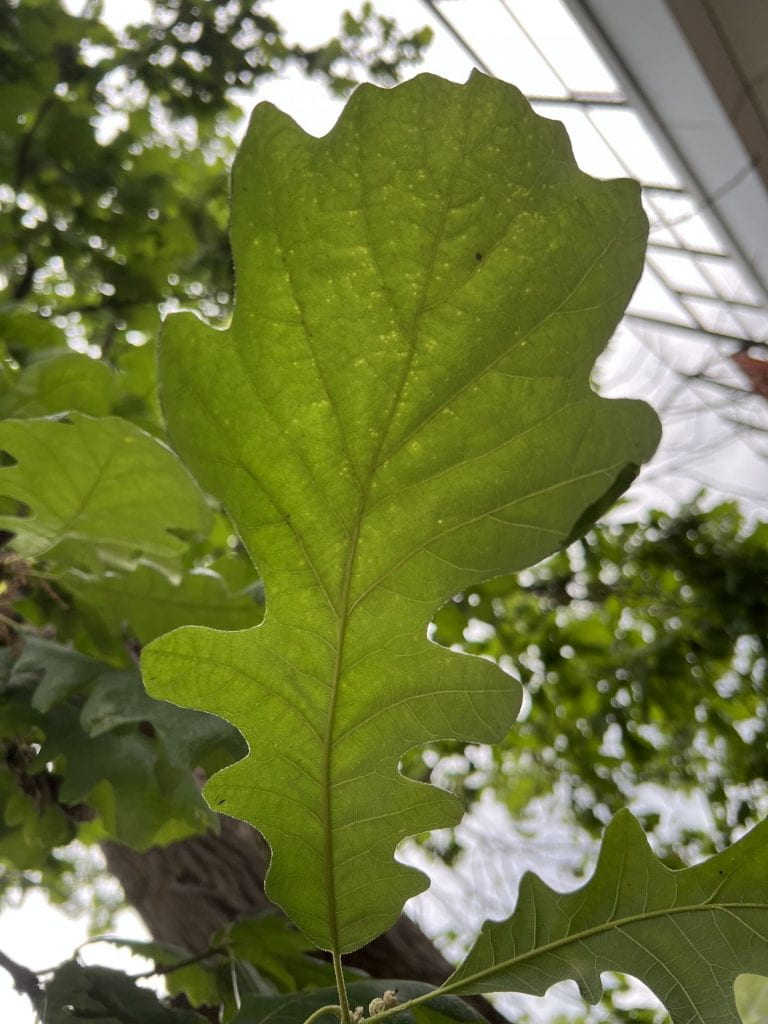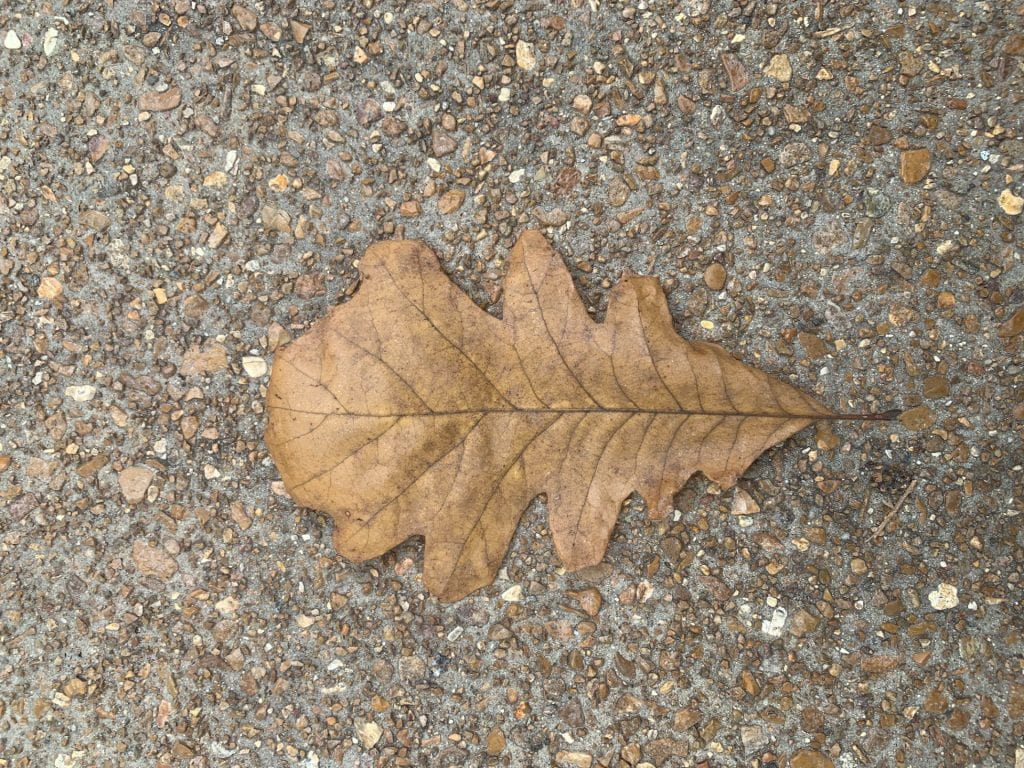Bur Oak
Arbor Walk #108, Treekeeper ID #1757

This tree is a deciduous tree in the Fagaceae family and is native to Missouri. The leaves are leathery, dark green and turn to yellow-brown in the fall. The oval acorns are large in size with fringed cups.
The Bur Oak is one of the most adaptable and durable trees in the oak family; it can survive in dry, nutrient poor soils, making it drought resistant. Its most distinguishing feature is its large, fringed cups, the largest of the native oaks. Although it is one of the slowest growing oaks, Bur Oaks can live for several hundred years. Due to its slow growth, its wood is quite durable and is often used for cabinetry and flooring.
The Bur Oak is a member of the subgenus of white oaks. These oaks are distinguishable from other oaks from their smooth lobe tips (no awns), their hairless leaf undersides, and their lighter, flakier bark. The acorns of white oaks are also less tannic, meaning that they require less processing to become safe and palatable. The Bur Oak’s acorns are especially prized in cooking and baking for their large acorns.


GPS Coordinates
N/A
Percent Concrete
N/A
Distance to Buildings
| Year | Close Building #1 | Close Building #2 | Close Building #3 |
|---|---|---|---|
Distance to Other Species
| Year | Close Species #1 | Close Species # 2 | Close Species # 3 |
|---|---|---|---|
Standard Measurements
| Year | Height (m) | DBH (cm) | Caliper (m) | Crown Diameter N-S (m) | Crown Diameter E-W (m) | Average Crown Diameter (m) |
|---|---|---|---|---|---|---|
| 2023 | 19 | 110 | N/A | 19.3 | 12.69 | 15.995 |
Nests and Pests
| Year | Description |
|---|---|
| 2023 | N/A |
Leaf Identification
The leaves of the Bur Oak are 6″ to 12″ long with 5 to 9 rounded lobes and roughly obovate. They are a dark green and leathery. They change to a yellowish-brown color in the fall. The leaves typically have a narrow “waist” (deep sinuses on each side) halfway down the leaf. The leaf tends to be much thicker above this waist line and thinner below.
Twig and Bud Identification
The twigs of the Bur Oak are yellowish-brown and sometimes has corky ridges. The buds are usually pubescent and round. It also has many terminal buds.
Bark Identification
The Bur Oak has dark gray to brown bark with deep furrows.
Fruit Identification
The Bur Oak has large, fringed acorns that have on average a 2″ diameter. Over half the cup is covered in scales, which culminate in a fringe of tiny fingers. The nut is edible if properly cooked and prepared.
[photo forthcoming]
Flower Identification
The male flowers of the Bur Oak are yellow-green, long catkins. They are typically 2″ to 4″ long. The female flowers are green with some red tint. They are single, short spikes.
[photo forthcoming]
ID Tips
- The Bur Oak is distinguishable from other white oaks by its large, nearly entirely cupped acorns, and its leaves, which will vary in sinus depth but always feature the “waisted” sinuses halfway up the leaf’s length.
- Compared to other white oaks with obovate leaves, like Swamp White Oak or Swamp Chestnut Oak, the Bur Oak has much deeper sinuses and very clear, defined lobes, which the other two will not always have.
- The bark furrows are more prominent and narrow than most other white oaks, which will have a plated bark texture.







